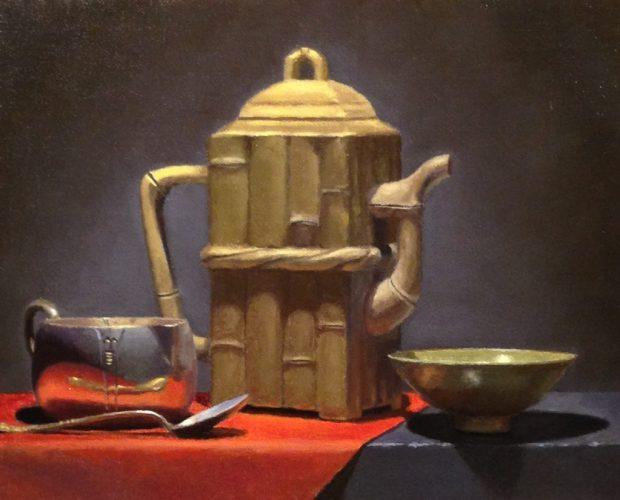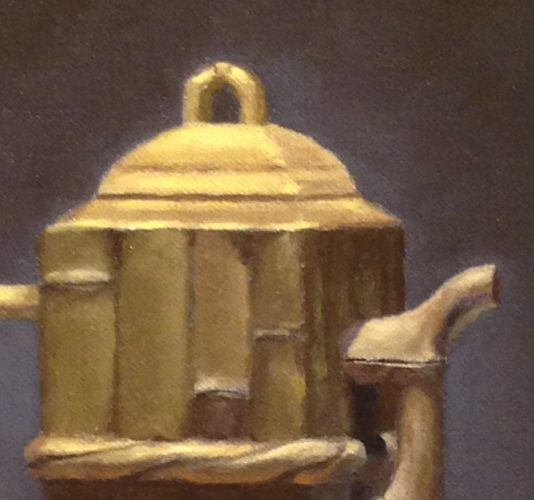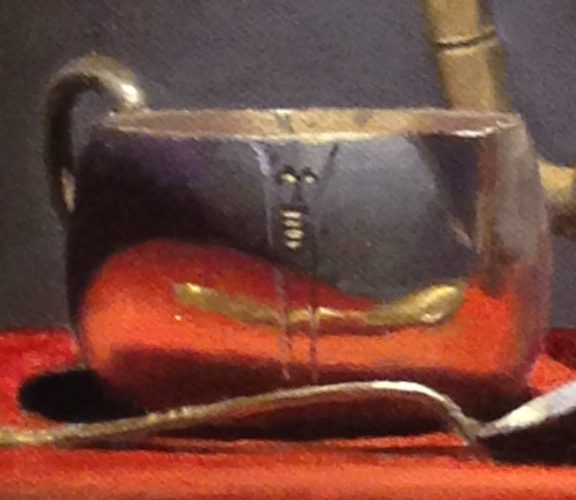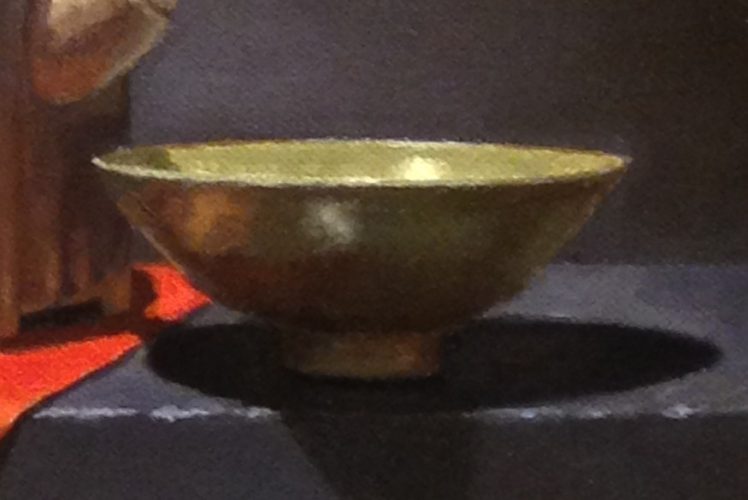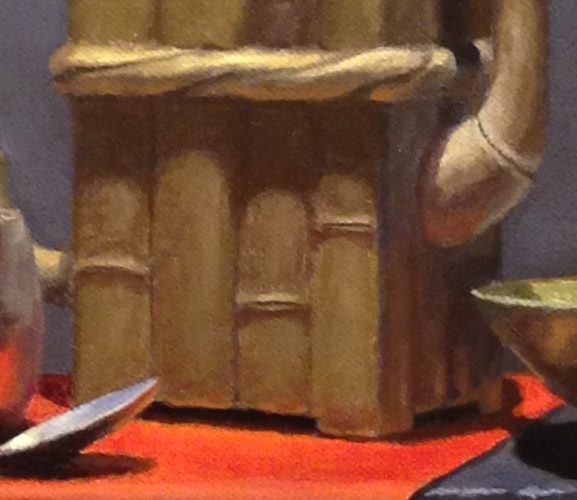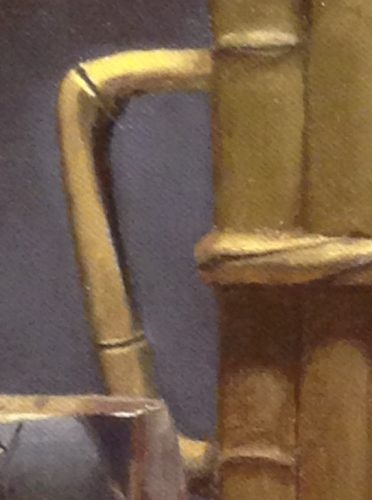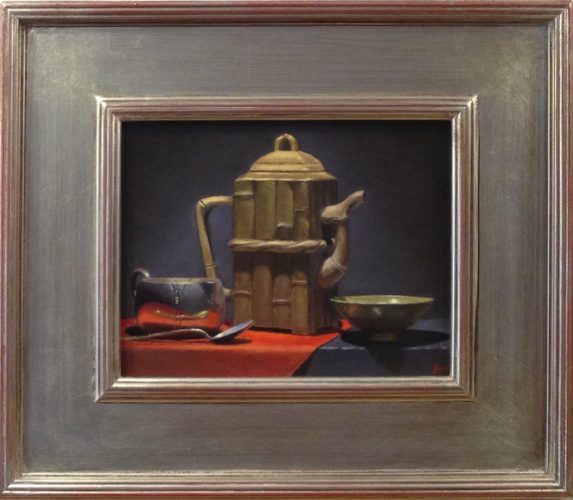"Yixing Teapot, Silver, and Bowl"
This week’s featured painting is “Yixing Teapot, Silver, and Bowl” from 2018. It is done with oil on linen on panel, and measures 8 x 10 inches.
The teapot in this painting is one of my favorite teapots – in fact, I think it’s one of the most unique and fascinating objects I have in my studio.
Yixing teapots are traditional Chinese clay pots, known for their unique qualities. They originate from the city of Yixing in the province of Jiangsu, and are made from locally sourced clay, which contains trace elements believed to enhance the flavor and aroma of tea.
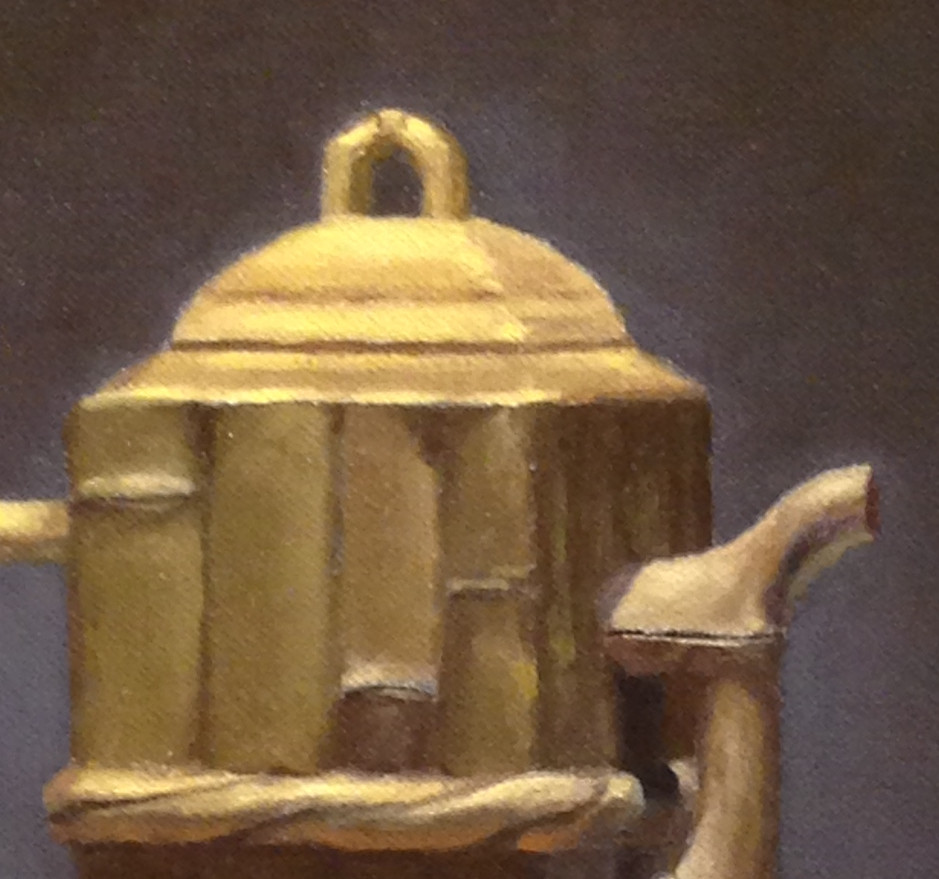
The clay used to make Yixing teapots, also known as “purple sand” or “zisha,” can be categorized into three main colors: purple, red, and beige. By mixing these clays and varying the firing temperature in the kiln, potters can achieve a range of earth tones, from a deep maroon to a light sand color, as with this one.
Being natural clay, these pots are known to absorb some of the flavors of the tea being steeped in them, and then release some of that flavor back into the pot with each subsequent brewing. Because of this, true connoisseurs will never wash these pots with soap, and may even only brew one flavor of tea in each Yixing pot, to avoid confusing the essence of the tea.
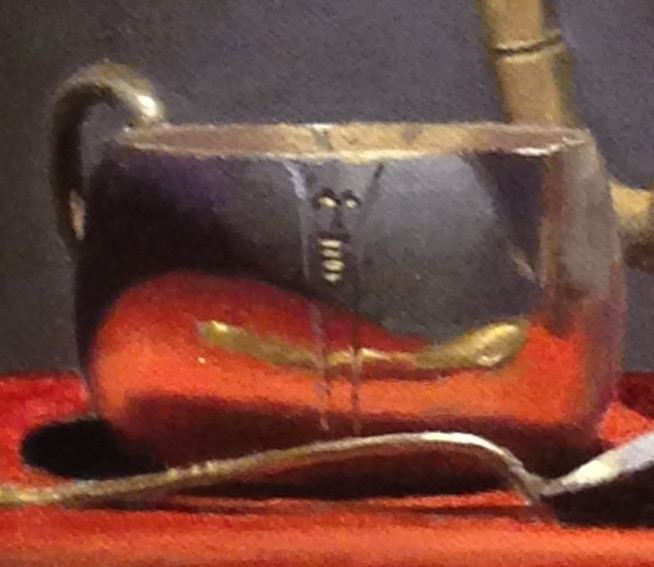
Yixing teapots have a storied history, with evidence dating back to the Song dynasty (10th century) of potters using local “zisha” clay to make utensils that may have functioned as teapots – the earliest surviving examples date to the 15th century. They gained popularity among Chinese tea connoisseurs and European collectors in the late 18th century and are now exported all over the world.
Yixing teapots are all hand-made using various techniques, including segmented teapots made with press-molding, round teapots made by paddling, and square teapots made by the slab method. They are also decorated with intricate designs using specialized tools and techniques.
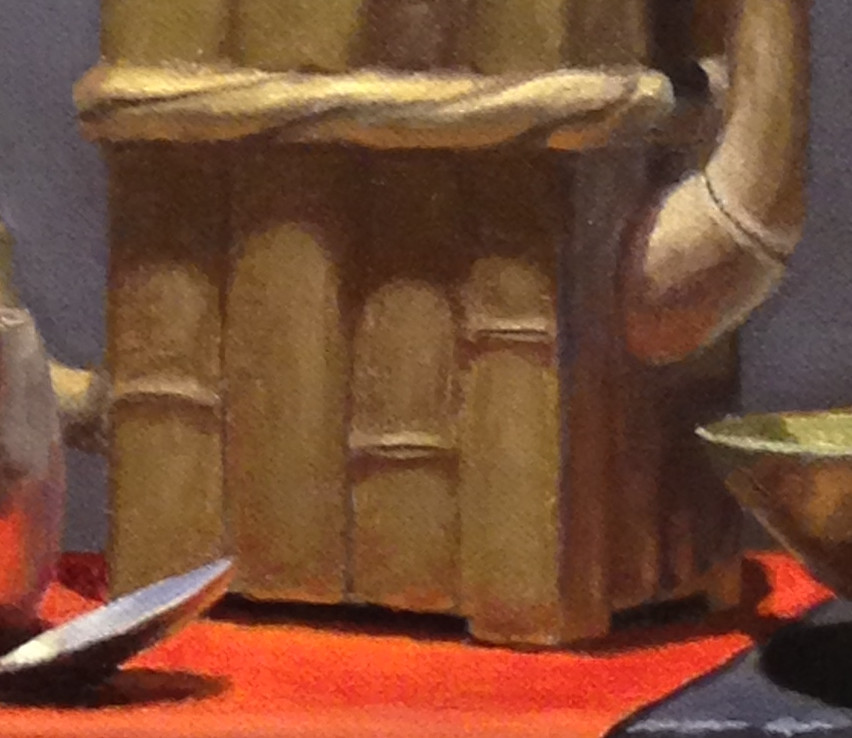
Far from being uniform, they come in a variety of shapes, limited only by the imagination of the potter. Many of them – like this one – are surprising and delightful forms.
They are in high demand – sought after by collectors and tea lovers, and I am delighted to have this one in my studio, where I not only enjoy looking at it, but find inspiration for some of my favorite paintings.
Canvas prints of this painting are available. To see more, click the blue button below.
